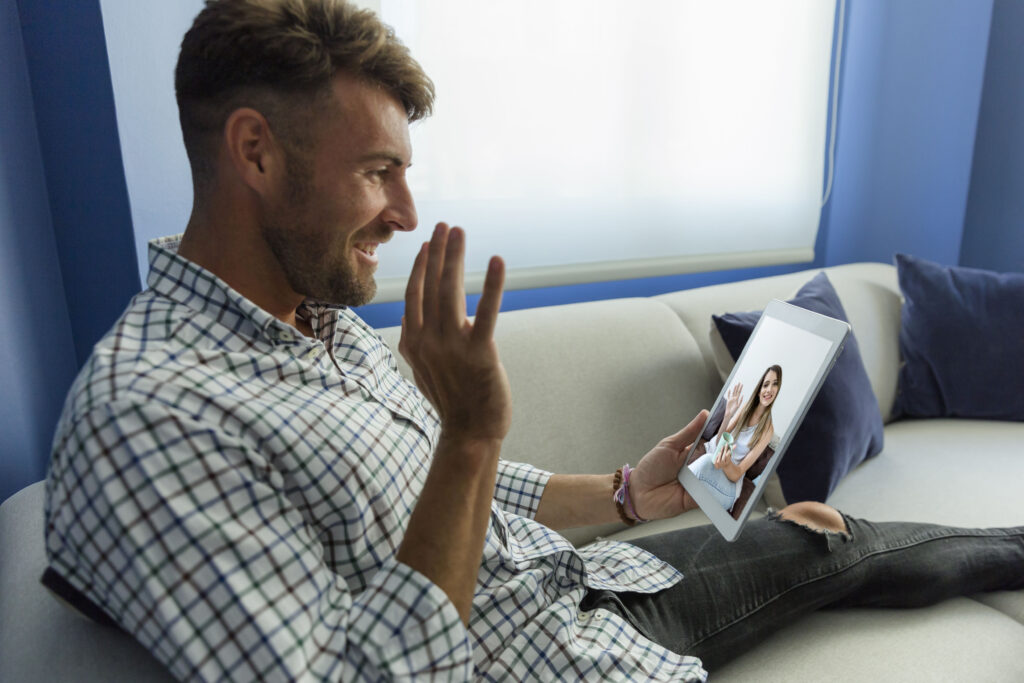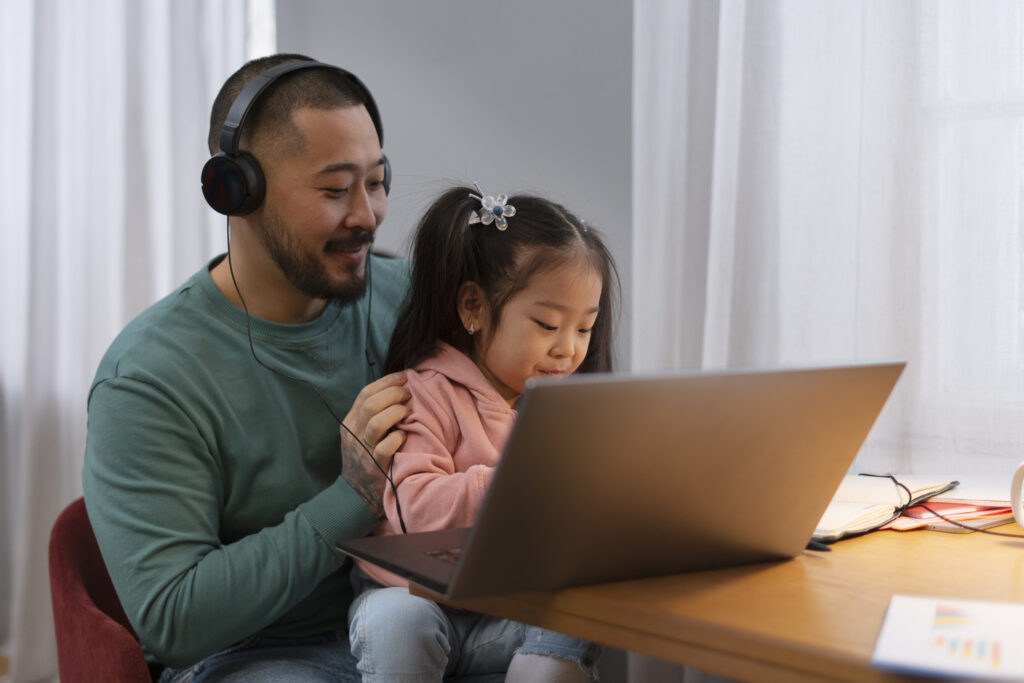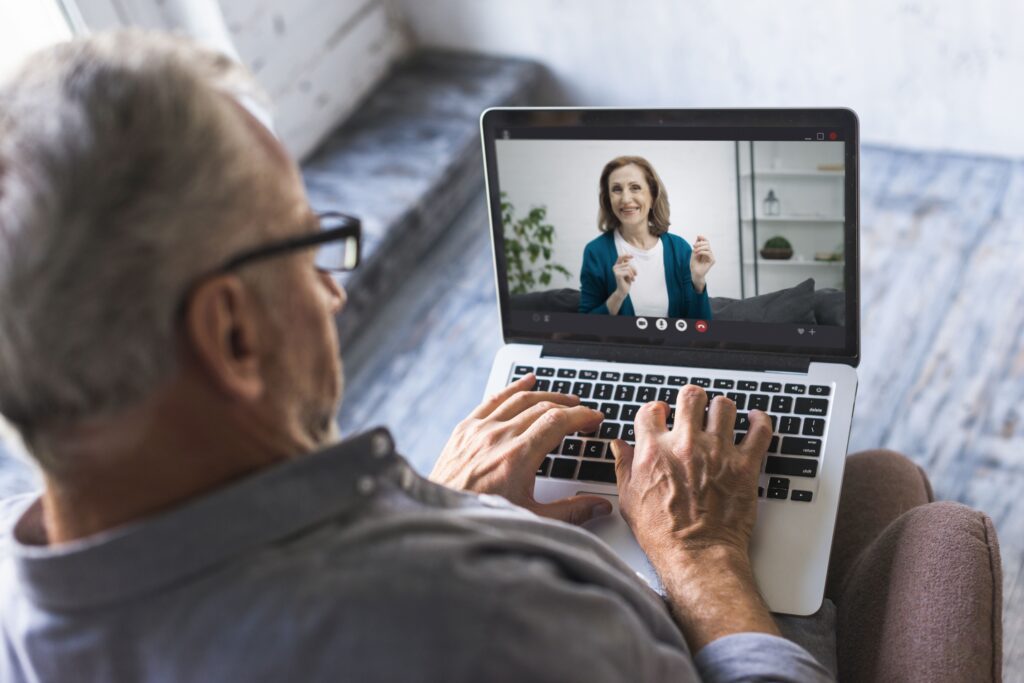Introduction
The mental health system wasn’t built for the kind of demand we’re seeing today. Between rising rates of anxiety, depression, and substance use — and an industry-wide shortage of licensed professionals — many people are waiting weeks (or longer) just to speak with someone. But Virtual IOP is changing that.
Virtual Intensive Outpatient Programs (IOPs) are bridging critical gaps in care. They provide structured, evidence-based treatment — just like traditional in-person IOPs — but through secure video platforms, often with greater flexibility and fewer barriers to entry. Patients can attend group therapy, meet with their therapist, and participate in skill-building workshops without needing to commute, take time off work, or find childcare.
What makes this shift especially compelling isn’t just convenience — it’s scale. Virtual IOPs have made it possible to meet more people where they are, at the exact moment they’re ready to get help. And that matters, because demand for accessible, scalable behavioral health solutions is higher than ever.
The Rise of Virtual Behavioral Health
Virtual care didn’t start with the pandemic, but it sure took off because of it. When COVID-19 forced clinics and hospitals to close their doors, a lot of providers had no choice but to adapt — fast. What started as a temporary solution quickly became something more permanent. Today, telehealth isn’t just an emergency backup; it’s a preferred method of care for millions of Americans.
According to recent global data, around 22% of European countries introduced telepsychiatry for the first time during the pandemic, and nearly half enhanced their existing systems to meet the sudden surge in need1. In the U.S., we saw a parallel movement: insurers expanded coverage, clinicians got licensed across state lines, and patients who were once skeptical realized virtual appointments could actually work — really well.
The mental health sector, in particular, became one of the biggest adopters. That’s not just anecdotal. By 2025, 38% of clinicians working in telemedicine were mental health professionals2. And among all the specialties on platforms like Zocdoc, virtual psychology appointments made up over 80% of total bookings3. That’s not a fad — that’s a full-on shift in how people want to receive care.
Virtual IOPs emerged from this moment. They didn’t just survive the pandemic era — they evolved from it. These programs combine structure, accountability, and flexibility, proving that high-quality treatment doesn’t have to be tied to a building.

Why Virtual IOP Works
If you’ve ever talked to someone who completed a Virtual IOP, chances are you didn’t hear complaints about missing a building. What they remember is the support. The group they showed up for each week. The therapist who actually understood what they were going through. The breakthroughs that happened on a random Tuesday at home — not in some fluorescent-lit office.
Virtual IOP works because it gives people real structure without uprooting their lives. These programs typically meet three to five days a week and include a combination of individual therapy, group sessions, psychoeducation, and ongoing progress monitoring — all facilitated through HIPAA-compliant video platforms. The curriculum is no different from in-person IOP. What’s different is how accessible it is.
Patients no longer have to take a bus across town, miss work, or find someone to watch their kids. They can log in from a safe, familiar space — often the place where their day-to-day challenges actually happen. That makes the therapy more relevant, more immediate, and for some, more effective.
And it’s not just about convenience. Studies show that virtual mental health care leads to comparable — and sometimes better — engagement than in-person models1. Patients show up more consistently. They stay in treatment longer. And perhaps most importantly, they start sooner. That’s critical in addiction and mental health recovery, where timing can make all the difference.
Meeting the Moment: Demand, Funding & Innovation
It’s not just patients and providers backing Virtual IOP — investors are, too. In 2024 alone, digital health startups focused on mental health raised $2.7 billion globally, with $1.4 billion of that coming from the U.S. market1. That’s more funding than any other clinical category — even more than cardiology, oncology, or chronic disease management. The signal is clear: the mental health space isn’t just growing; it’s leading.
This level of investment isn’t hype — it’s recognition of what’s working. Virtual IOPs sit at the intersection of clinical rigor and modern accessibility. They’re not trying to replace therapy with apps or shortcuts — they’re bringing evidence-based care to people who otherwise might not get it. They’re scalable, measurable, and designed to meet the reality of today’s demand.
And the demand is staggering. Even with telehealth, most regions still report a shortage of licensed therapists. Waitlists for in-person care can stretch into months. Meanwhile, the need keeps growing. From substance use disorders to anxiety, depression, and trauma-related conditions, the behavioral health system is under immense pressure — and virtual models like IOP are helping release that pressure valve.
At the same time, these programs are evolving. Some now integrate biometric tracking, while others partner with mindfulness and habit-building apps. Many have added text-based check-ins or AI-assisted journaling between sessions to help keep patients engaged. These aren’t gimmicks — they’re thoughtful add-ons designed to enhance clinical touchpoints, not replace them.
This is where Virtual IOP shines. It’s built for the world we live in now — one where people are overwhelmed, overbooked, and under-supported. And it’s proving that real treatment can still cut through all that.
Technology Enhancing Outcomes
Let’s be real — what makes Virtual IOP work isn’t just that it’s online. It’s the way tech is being used to actually improve care. This isn’t therapy over Zoom and that’s it. We’re talking platforms that are built with real clinical outcomes in mind.
Some programs are starting to use AI, not in a gimmicky way, but to make the experience more helpful. It can flag when someone’s mood is slipping based on their journaling, suggest prompts between sessions, or even surface insights to the therapist that help guide the next conversation. In 2024 alone, mental health startups using AI brought in over $1.3 billion in VC funding1. That’s not just investors getting excited — it’s proof that this tech is solving real problems.
Then there are the tools patients already use in their everyday lives — wearables, mindfulness apps, mood trackers. These aren’t just nice add-ons. When used right, they reinforce the work happening in session. A lot of Virtual IOPs now incorporate these tools into treatment, helping people build daily habits, track progress, and stay accountable between appointments. It’s a win on both sides — patients feel more supported, and providers get more insight.
And look, people want this. The meditation app market hit over $5 billion globally last year2, and about 1 in 3 adults in the U.S. spent money on a mindfulness or mental health app in 20243. So if you’re building a program that lives online, why not meet people where they already are?
At the end of the day, this isn’t about replacing the human element — it’s about strengthening it. The goal of tech in Virtual IOP isn’t to automate therapy. It’s to keep people connected, engaged, and moving forward — even when life gets chaotic.

Accessibility and Equity
One of the biggest advantages of Virtual IOP — and probably one of the most overlooked — is how much more accessible it is. For a lot of people, especially those juggling work, family, or living in areas without many providers, virtual care isn’t just a nice option — it’s the only one that actually works.
You don’t need a car. You don’t need to take half a day off work. You don’t even need to leave your kids with someone. You just need a quiet space, a stable connection, and a willingness to show up. That alone removes huge barriers for so many people who otherwise would’ve put off treatment or skipped it altogether.
And the data backs that up. In 2024, 41% of U.S. adults said they’d prefer to receive mental health care through telemedicine1. That’s not just a few outliers — that’s nearly half the population. And when people do have access to virtual care, they use it. Over 84% of psychology appointments booked on Zocdoc were virtual2. That’s not convenience — that’s demand.
Virtual IOP is also helping close the gap for rural communities, where the nearest therapist might be an hour or more away. It gives single parents, people with disabilities, and those without flexible jobs the chance to finally prioritize their mental health or recovery without rearranging their entire lives.
Could access still be better? Absolutely. We still need to address tech literacy, language barriers, and internet access in underserved communities. But compared to traditional models, Virtual IOP is a major step forward — and it’s expanding the definition of who treatment is actually for.
Program Design & Clinical Excellence
Just because it’s virtual doesn’t mean it’s casual. Virtual IOPs follow a clinical framework — real treatment, real standards, real outcomes. If you stripped away the screen, you’d see the same level of structure and professionalism you’d expect in any licensed outpatient program.
Most Virtual IOPs run three to five days a week, a few hours per session. Patients typically attend group therapy, have individual sessions with a licensed therapist, and participate in psychoeducation, relapse prevention, or skills training depending on their needs. Some programs include family involvement. Others offer medication management or psychiatric check-ins — all virtually, all secure.
The core is the same as in-person IOP: consistent, evidence-based care with accountability baked in. It’s just delivered in a way that fits modern life.
Clinical quality doesn’t get watered down when it’s online — if anything, it gets sharpened. Sessions are recorded for compliance and quality review. Progress is tracked more consistently through digital notes, mood surveys, and EMR integration. And when a patient logs in from home, what they bring to the table is often more real, more raw — because they’re not trying to hold it together in a clinic waiting room.
The best programs don’t just “go virtual.” They’re built around the virtual model. That means using secure platforms, training staff in online facilitation, and making sure each patient’s care plan reflects both clinical best practices and their lived reality.
Virtual IOP isn’t a downgrade — it’s a well-run system that makes quality care more available to more people. And that’s exactly what the behavioral health space needs.
Innovation Opportunities
If there’s one thing Virtual IOP proves, it’s that this space is just getting started. We’ve already seen how well it works when it’s done right — now the focus is on how to make it work even better, for even more people.
There are areas that still need building out — not because the model is flawed, but because it’s evolving fast. For example, state-by-state licensing laws can make it tough for providers to treat patients across borders, even when those patients desperately need access. But the momentum is shifting. With growing support for telehealth parity laws and more compact licensure agreements being proposed, we’re getting closer to a future where location doesn’t limit care.
Tech onboarding is another opportunity. Not everyone is immediately comfortable navigating online platforms — especially older adults or people with limited digital access. The fix isn’t to go back to in-person — it’s to improve onboarding, offer multilingual tech support, and design systems that are just easier to use. Programs that invest in this see better engagement up front, which leads to better outcomes long-term.
There’s also room to expand what support looks like between sessions. A lot of programs are already experimenting with check-in texts, guided journaling apps, and digital accountability tools. These aren’t replacing therapy — they’re extending it. They give patients something to lean on when life hits at 11PM and group isn’t until tomorrow.
The truth is, everything that might’ve been called a “challenge” a few years ago is now a build opportunity. And in a field where access and outcomes can literally change lives, we need to keep building.
Looking Ahead
Virtual IOP isn’t just a phase. It’s not a placeholder. It’s the future — and the future is already here. We’re watching the behavioral health field shift in real-time, with patients asking for more flexibility, more access, and more support — and with Virtual IOP, that’s exactly what they’re getting.
As technology improves, as licensing catches up, and as more providers step into this space with real clinical standards, Virtual IOP will keep expanding its reach. And for many people, it’ll be the reason they finally start treatment — not someday, but now.
If you’re looking for Virtual IOP in California, reach out to our partner program, Asana Recovery. They offer a highly structured virtual IOP that’s designed for people who want real results — and we provide sober living support if you need a safe, stable environment while attending treatment.
Because recovery doesn’t have to wait until everything in your life is perfectly in place. With the right support, you can start wherever you are — and that’s exactly what Virtual IOP was built for.
Sources
Stewart, Conor.
VC Funding for Digital Health Ventures in Mental Health Worldwide from 2020 to 2024. Statista, 20 May 2025, www.statista.com/statistics/1313087/digital-health-mental-health-venture-capital-funding-worldwide/
Stewart, Conor.
VC Funding for Mental Health Ventures Leveraging AI Worldwide from 2020 to 2024. Statista, 20 May 2025, www.statista.com/statistics/1372075/mental-health-ai-venture-funding/
Stewart, Conor.
Meditation App Market Size Worldwide in 2024. Statista, 20 May 2025, www.statista.com/statistics/1222461/meditation-app-market-size-worldwide/
Stewart, Conor.
Share of Adults Who Have Spent Money on a Meditation or Mindfulness App in the U.S. as of 2024. Statista, 20 May 2025, www.statista.com/statistics/1301993/mental-health-app-spending-usa/
Stewart, Conor.
Psychologists Offering Remote or In-Person Treatment in the U.S. from 2020 to 2024. Statista, 20 May 2025, www.statista.com/statistics/1187774/us-psychologists-remote-treatment/
Stewart, Conor.
Share of Virtual and In-Person Appointments Booked in the U.S. in 2023, by Specialist. Statista, 20 May 2025, www.statista.com/statistics/1407885/virtual-vs-in-person-appointments-by-specialist-us/
Stewart, Conor.
Preference of Using Telemedicine in the U.S. in 2023, by Type of Care Needed. Statista, 20 May 2025, www.statista.com/statistics/1315211/telemedicine-preference-by-care-type-us/
World Health Organization (WHO).
The Impact of COVID-19 on Mental, Neurological and Substance Use Services: Results of a Rapid Assessment. Oct. 2020, www.who.int/publications/i/item/978924012455

